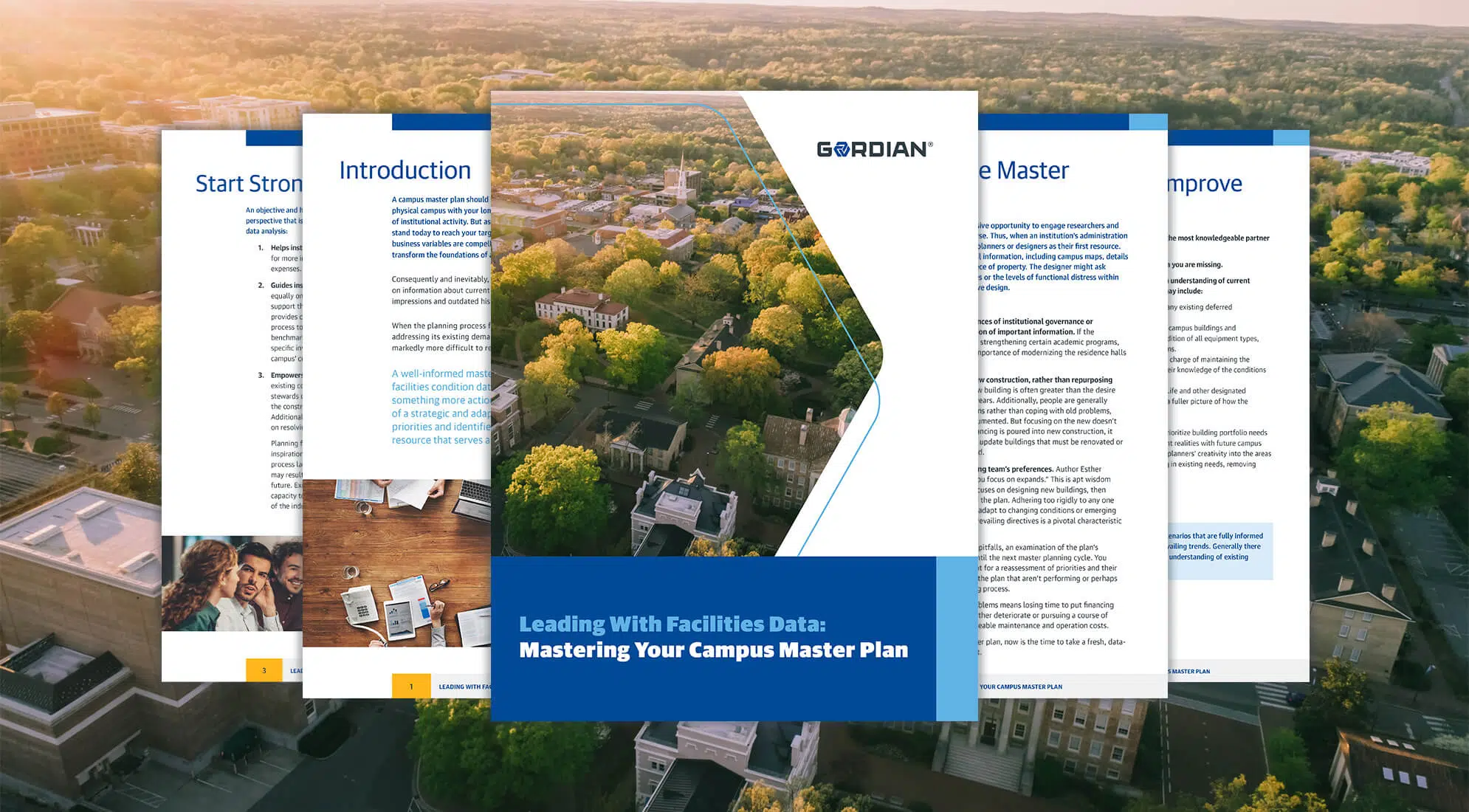An effective and actionable campus master plan doesn’t happen on its own. Institutional leaders have to plan to plan. The concept is equivalent to building your house on a solid foundation. If you only plan to build a beautiful home, but don’t plan location or anticipate weather conditions and flood patterns, your beautiful home could collapse. Strategic thinking and details are critical to a plan’s success.
For higher education leaders embarking on a master planning initiative, it’s important to focus your efforts on understanding objectives and institutional vision. You need to understand what you’re capable of doing programmatically, but most importantly, financially. A campus master plan absent financial context is reckless. If the institution’s mission is clear, you’ll have control over the process and not subject it to the planner’s perspective exclusively. You need to be able to plan on your terms.
These three steps can help build a stronger foundation for and help prioritize your master planning process:
1. Identify the Information You Need to Be a Knowledgable Campus Master Planning Partner
The first step in this process is to have a firm grasp on the strategic objectives for the institution. Evaluate what’s been done in the past, analyze the results of those efforts and make sure everyone is clear about the institution’s financial position. What resources do you have and what’s your investment capacity? What political forces may potentially influence the plan? How will you incorprate and manage those influences?
Finally, identify all the data you’ll need to help guide the master planning process.
2. Gather Existing Information and Determine Data Gaps
After step one, you have a long list of everything you need to provide your master planning team. Gather all the existing information and determine what you don’t yet have. Often times within a facilities organization, the most critical missing component in the “planning to plan” phase is an objective assessment of current conditions and financial capabilities. A successful, well-informed master plan begins with this exploration. It can form the basis of a strategic project plan that identifies institutional priorities and the greatest areas of need to provide a truly useful resource to the master planning process. A master plan absent this context becomes markedly more difficult to realize and will be constructed on a shaky foundation.
3. Assess Campus Conditions
Initiate an assessment process that provides a thorough understanding of current campus conditions and needs. This process may include:
- Collecting data on deferred maintenance, including any existing deferred maintenance studies.
- Performing a field assessment that involves walking through all campus buildings and inventorying what’s there as well as the general condition of all equipment types, interior finishes, exterior facades and other relevant systems.
- Engaging with the facilities staff and other people in charge of maintaining the campus to understand their priorities and capture their knowledge of the conditions as a result of living with them day in and day out.
- Conducting interviews with IT, Security, Residential Life and other designated department heads or institutional leaders to gather a complete picture of how the existing campus facilities are performing.
A Solid Foundation for Campus Master Planning
The information mined from these activities should be used to prioritize building portfolio needs and establish a strategic framework for linking today’s investment realities with future campus aspirations. This understanding can then be used to channel the planners’ creativity into the areas that must be addressed in the master plan, whether that’s reinvesting in existing needs, removing certain buildings or building new. The goal at this stage of the planning process is to develop scenarios that are fully informed by an extensive knowledge of existing circumstances and prevailing trends.






